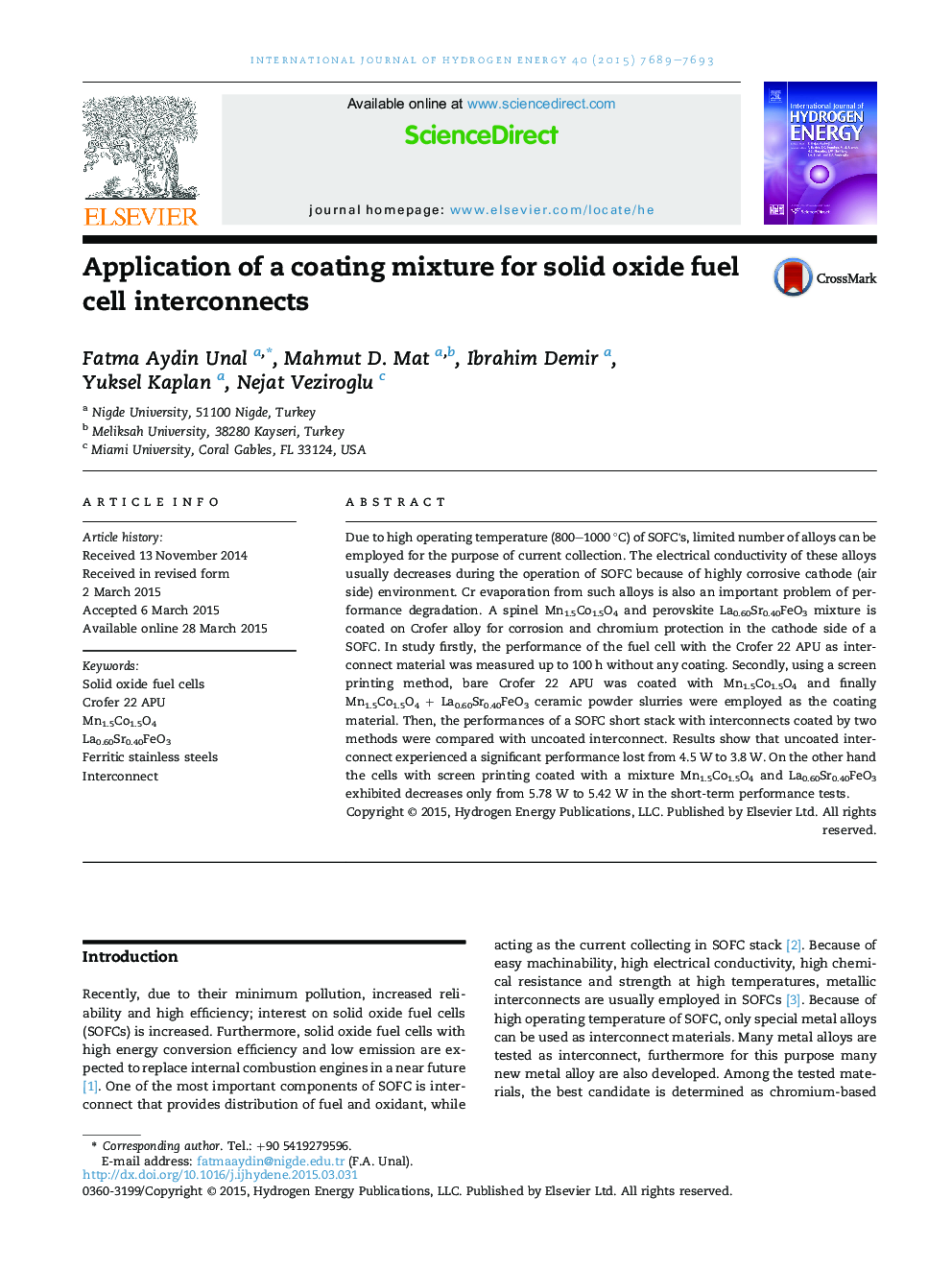| Article ID | Journal | Published Year | Pages | File Type |
|---|---|---|---|---|
| 1279744 | International Journal of Hydrogen Energy | 2015 | 5 Pages |
•Metallic interconnect alloy is coated with conductive and protective layers separately and together by screen printing method.•The Crofer 22 APU alloy is employed as interconnect.•A 16 cm2 active area short stack is used in all performance measurements.•The conductive layer and protective layers improves the short term performance.•A combination of conductive and protective layers improves the performance better.
Due to high operating temperature (800–1000 °C) of SOFC's, limited number of alloys can be employed for the purpose of current collection. The electrical conductivity of these alloys usually decreases during the operation of SOFC because of highly corrosive cathode (air side) environment. Cr evaporation from such alloys is also an important problem of performance degradation. A spinel Mn1.5Co1.5O4 and perovskite La0.60Sr0.40FeO3 mixture is coated on Crofer alloy for corrosion and chromium protection in the cathode side of a SOFC. In study firstly, the performance of the fuel cell with the Crofer 22 APU as interconnect material was measured up to 100 h without any coating. Secondly, using a screen printing method, bare Crofer 22 APU was coated with Mn1.5Co1.5O4 and finally Mn1.5Co1.5O4 + La0.60Sr0.40FeO3 ceramic powder slurries were employed as the coating material. Then, the performances of a SOFC short stack with interconnects coated by two methods were compared with uncoated interconnect. Results show that uncoated interconnect experienced a significant performance lost from 4.5 W to 3.8 W. On the other hand the cells with screen printing coated with a mixture Mn1.5Co1.5O4 and La0.60Sr0.40FeO3 exhibited decreases only from 5.78 W to 5.42 W in the short-term performance tests.
